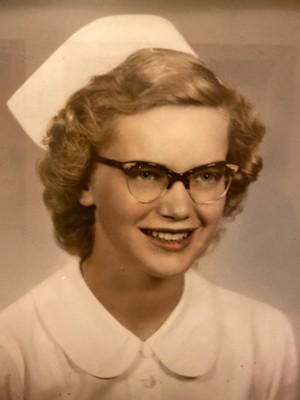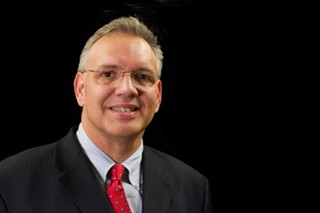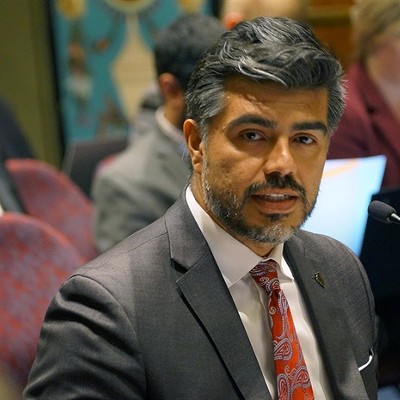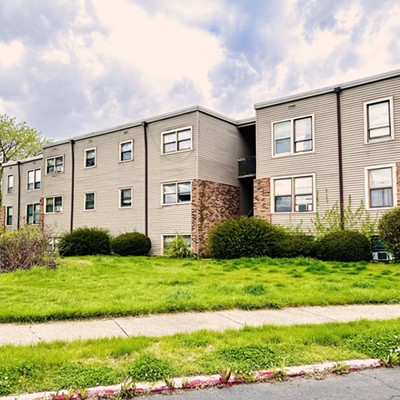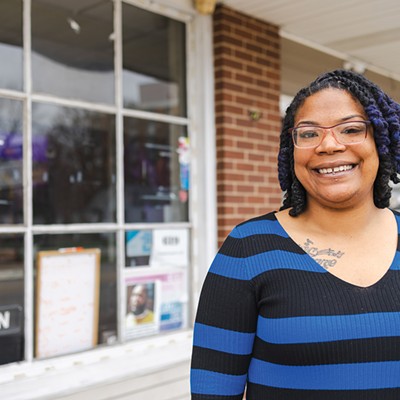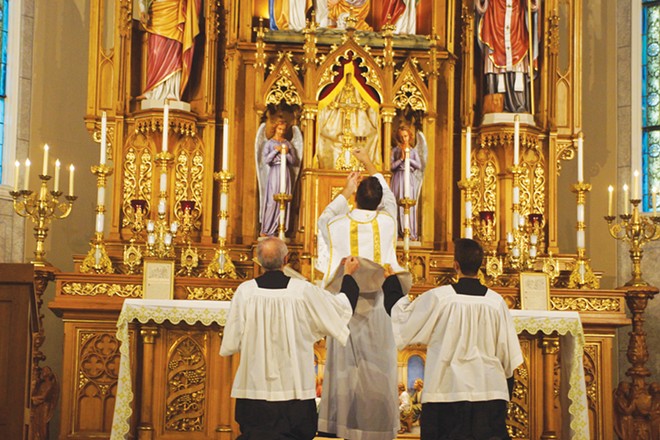
The members of Sacred Heart Catholic Church have been anxious for weeks as their way of worship has come under attack from a powerful source – Pope Francis.
Parishioners at the church on Springfield's east side worship the way Catholics have for more than 1,000 years, in Latin.
But what was once a ubiquitous rite within the church has come to be seen by the pope, and other Catholic progressives, as divisive.
In a July letter to bishops, Francis said the traditional Latin Mass has been "exploited to widen the gaps, reinforce the divergences, and encourage disagreements that injure the Church, block her path, and expose her to the peril of division."
It was as if he struck a sledgehammer on an already spreading fracture line between traditionalists and the rest of the denomination.
Along with the letter, he issued an order that priests could not perform the Latin Mass without the direct approval of their bishop. In the Springfield Diocese, Bishop Thomas Paprocki is an advocate of the traditional Latin Mass, so little has changed.
So, what is the fuss?
The Latin Mass controversy is emblematic of deeper divisions within Catholicism and what direction the denomination should take. It's a power struggle between some conservative American bishops and the pope, said Massimo Faggioli, a theology professor at Villanova University in Philadelphia.
"These bishops are rejecting Vatican II," he said. "Oh, they won't say it publicly – that could get them in real trouble with the pope. But that is what's happening."
The Second Vatican Council, which took place in the 1960s, is the benchmark for reform and modernization efforts within the Roman Catholic Church.
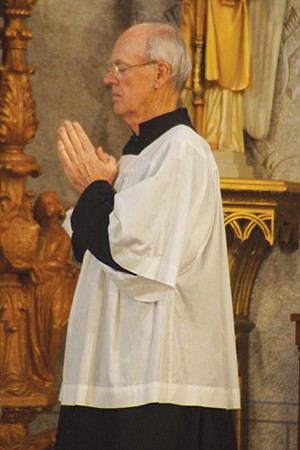
Faggioli added that Paprocki is a leader among those in disagreement with the pope. He noted that the bishop wrote the foreword to the book Slaying the "Spirit" of Vatican II With the Light of Truth, a book described as helping ordinary Catholics combat the errors and confusion introduced to the church in the wake of Vatican II.
Still, it is disconcerting for many traditional Catholics to have the pope attack the manner in which they pray. Sacred Heart congregants interviewed by Illinois Times expressed support for Pope Francis but were perplexed by his concerns.
"Some people will pass through the church and get all high and mighty and say, 'This is the only way to worship,'" said Beth Clark, 43, of Springfield. "But it doesn't last long. Christianity is all about humility. And those people don't stay."
The vast majority of Catholics, both in the United States and across the world, attend the modern Mass, which was devised in the 1960s and is a product of the reform-minded Second Vatican Council, or Vatican II. The modern mass is celebrated in English and other local languages.
But a committed group of traditionalists prefer the old rite, a ceremony conducted in Latin. In 2007, Francis' predecessor, Pope Benedict XVI, loosened the rules concerning when the Latin, or Tridentine Mass, could be practiced.
This caused a revival of the old rite in the United States and, to a lesser extent, in Great Britain, said Timothy O'Malley, academic director of the Notre Dame Center for Liturgy.
"Most of the rest of the world didn't pay much attention, but for whatever reason, it really caught on in these two English-speaking countries," he said.
Parishioners at Sacred Heart, 722 S. 12th St., say the tradition itself is what is appealing.
"It's the way hundreds of popes have prayed. It's the way saints like Francis (of Assisi) prayed. When we pray, we are part of a continuum that dates back more than 1,000 years," said Robert Lemmon, 33, of Harristown.

Lemmon, his wife, and their six kids drive 33 miles each way from their Macon County village to attend Mass at Sacred Heart each week.
Paprocki said Sacred Heart is now a destination for families throughout central Illinois who want to worship in the traditional way. He added that particular parish was struggling because of low attendance when he made the decision to invite the Canons Regular of St. John Cantius to take charge of the parish in 2015. The Catholic religious community, based in Chicago, has 14 priests and was founded in 1998. The Rev. Trenton Rauck said the mission of his group is to "restore the sacred."
According to Rauck, "We restore the (Latin) liturgy, sacred music and sacred art. So, you see a lot of statues, you see a lot of paintings, you see sacred vestments, sacred vessels, all these things that are objectively beautiful. You walk into the church and see beauty with all the statues and all the stained-glass windows. It is as if you're actually entering into heaven. You're getting out of the world, which is behind these doors, and just tasting a sample of heaven."
In addition to the traditional Latin Masses, St. Katharine Drexel parish's four priests, who are all part of the Canons Regular, also say Spanish and English Masses. The two churches in the parish are Sacred Heart and St. Patrick's.
Notre Dame director O'Malley, who considers himself neutral on the Latin Mass controversy, said those attending these services tend to be younger, have larger families and be more conservative doctrinally, culturally and politically.
But Paprocki said while Latin Mass communities may be more conservative, that shouldn't be troubling.
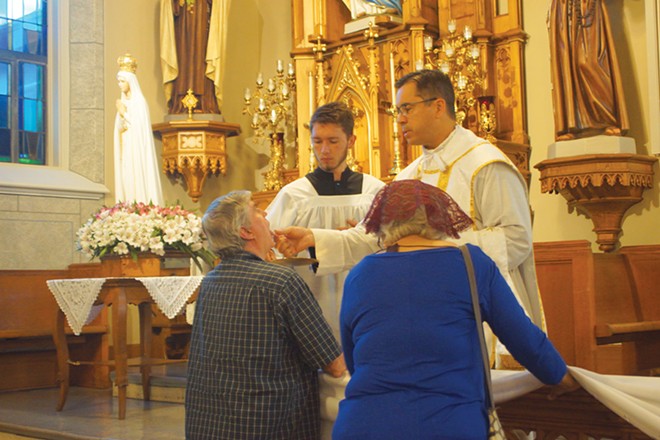
"Some places are conservative and some places are more liberal. ...You go to one parish and their music might be a little more contemporary in style, with a variety of instruments. And you go to another parish and it's an organ and Gregorian chants. People have different tastes. God speaks to them in different ways, in a sense. I would argue you can have a unity with diversity," he said.
While Paprocki said he does not reject Vatican II, he did cite the work of British sociologist Stephen Bullivant, who questions whether Vatican II benefitted the church.
"If the hope was that this would increase the practice of the faith, just look at the numbers," Paprocki said. "Before the Second Vatican Council, about 70% of Catholics would go to church every Sunday. Since then, across the United States, it's closer to 30%. In some parts of the world, like in Germany or France, it's somewhere between 4-10% percent. If the goal was to increase participation, I would have to say the council failed."
Parishioner Beth Clark said she has seen no evidence at Sacred Heart that either clergy or the parishioners reject Vatican II. She noted that she and her husband, Wes, and their seven children worship in both Latin and English Masses.
"I haven't personally seen it in our priests or anything like that. But every once in awhile, you'll get somebody that comes through and says, 'This is the only Mass out there.' And I'm sure Pope Francis is like, 'No, we can't have that kind of attitude.' Christianity is about humbleness and loving and acceptance, and that's what I've heard from him since he started his pontificate."
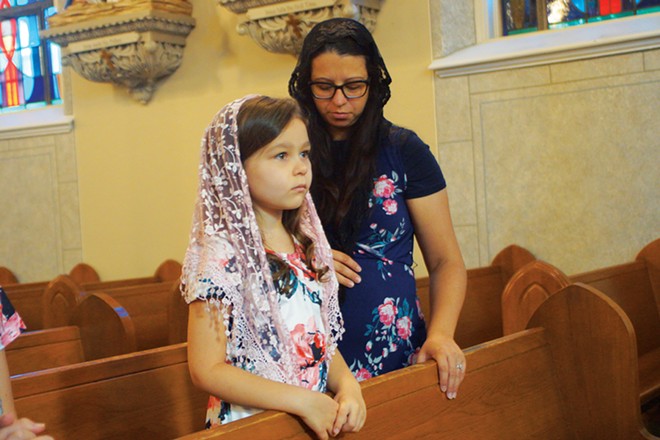
Clark added that she has seen condemnation of Vatican II in online forums but her reaction to such talk is always the same: turn away.
While many attending Latin Masses grew up Catholic, others are converts to Catholicism, mainly from conservative Protestant denominations, professor Faggioli said.
"It's as if they are saying, 'If I'm going to be Catholic, let's go all of the way,'" he said. "They have a view of the Catholic church that tends to be closer to the 1950s version of Catholicism. They have a problem dealing with modernity. What took place after the 1960s and '70s in this country were massive changes: contraception, abortion, LGBT issues. Latin is a statement of what they think of the Catholic Church now," he said.
"It's not an accident that all of these Catholics at the old Mass are white, because one of the things that happened after Vatican II was an 'inculturation' of the liturgy," Faggioli noted, referring to music and art from various ethnic and racial groups that have been incorporated into church services to better reach the communities they serve.
"The Latin Mass is white and European by its definition, because it's a product of the Catholic Church of the 16th century. So, this is creating serious problems because it is never limited to the liturgy only, but it is always the first step to saying Vatican II was a disaster," he said.
Although Sacred Heart is in the middle of a predominantly African American neighborhood, on a recent Sunday, no Black faces were seen in the sanctuary.
Rauck said he and the other three priests serving the St. Katharine Drexel parish routinely walk the neighborhood and invite residents to the church.
As for why so few Black people attend the Latin Mass, Rauck said, "You can lead a horse to water, but you can't make him drink."
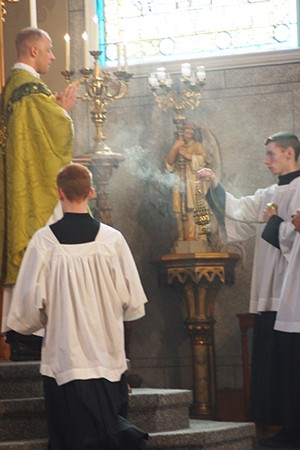
Brad Shaffer, 36, of Springfield, said he's been attending Sacred Heart for two years. He agreed the congregation seems more conservative.
"There does seem to be a lot of Ford Transits in the parking lot – the 12-seaters," he said with a laugh. He and his wife have been married 11 years and have five children.
"I think it's just in trying to live in the teachings of the Catholic Church, of not using contraception, not having abortions, being married before you have kids and being open to life, as we're called to do," he said. "When we are married, it just turns out that way. You will be blessed with many."
The roles played by women and girls can be different in Latin Mass congregations than in other Catholic parishes. For example, while both boys and girls are allowed to be servers in most Catholic churches, in the St. Katharine Drexel Parish there are only altar boys.
"In our parishes, we just have boy servers because we are trying to foster interest in (priestly) vocations," Sacred Heart pastor Rauck said. "It's not that we don't like girls or women or are opposed to them having certain roles. But this is one of the roles that we have used to foster vocations in boys."
Also, almost all of the women attending the Latin Mass wore chapel veils, something rarely seen in most Catholic parishes.
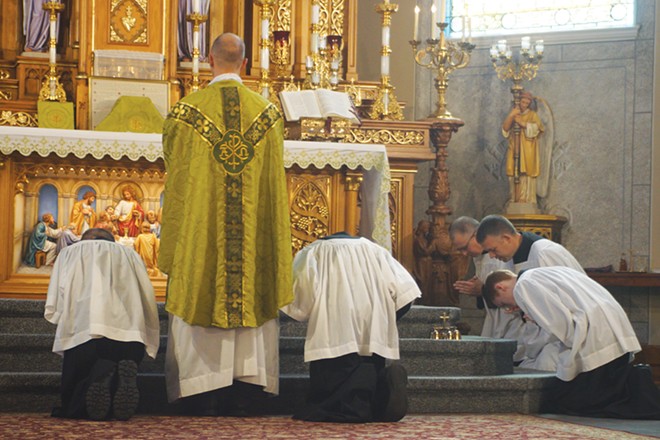
"It focuses me," said Pam Spaniol of Sherman. "And the most important thing on earth is to praise and worship God. I try to dress well, because this is a special event. I also try to wear my veil because, again, it's something to focus me into humbling myself to God."
Members of Sacred Heart said they were perplexed by Pope Francis' concern over Latin Masses.
Parishioner Beth Clark said she prays the pontiff will come to see its value.
"It's really about humility and submitting ourselves to Christ," she said. "I think there's a call for that, and I think the Latin Mass can do that. And I hope (Pope Francis) sees that."
—-
My first time attending a Latin Mass wasn't quite as eventful as my mother's.
Back in 1950, when she was a student at a Catholic nursing school in Macomb, Illinois, students were required to line up for chapel daily in their pressed white uniforms and file in behind a nun. My mother, a gangly, 5-foot-10-inch teenager who grew up Methodist, was the first student in line.
Mom had never been to a Catholic service before and didn't know what to expect. When the nun in front of her genuflected, my mother fell over her. Despite this first-time pratfall, my mother developed a love of the rites and rituals of the Catholic church.
Back in those days, of course, all Catholic Masses were conducted in Latin. In the 1960s, that changed when the Second Vatican Council, or Vatican II, decided that Masses should be conducted in English or other local languages.
So, when I read in July that Pope Francis was cracking down on the Latin Mass, my first reaction was, "Is that still a thing?"
A few phone calls later, I learned that Springfield has a flourishing Latin Mass community. I decided to attend and learn more.
While my wife and children are Catholic, I worship in an evangelical church where the music is contemporary, the pastors wear golf shirts and the auditorium is void of any icons other than a cross.
But one thing I like about attending Catholic services with my family is the sense of solemnity when entering the sanctuary. In a busy, fast-paced world, there is an otherness there that is soothing and provides room for contemplation and prayer.
In the moments before the service, folks at Sacred Heart were praying. I looked about and noticed that almost all of the women were wearing chapel veils. The families were large, often with six, seven or eight kids packed in the pews. And the altar servers were all boys.
Observing this, I thought that it was very much how my mother described the Catholic church in the 1950s.
For my mother, her time in college was a spiritual journey.
She grew up in challenging circumstances: an impoverished home, an alcoholic father and a mother who wasn't kind. She left home at 17 and almost immediately met Sister Stanislaus, a woman who changed her life.
I never learned this nun's first name. But my mother spoke glowingly of her for more than half a century. The sister taught nursing and may have been the first person to show my mother unconditional love.
She shared Christ in the manner of St. Francis: "Preach the gospel at all times, and if necessary, use words."
For my mother, the face of the Roman Catholic Church wasn't the homilies heard, the Our Fathers said or the rosaries recited. It was the kind face of a middle-aged, Polish nun who always cared.
Sitting in the front pew at Sacred Heart, I heard the choir singing Gregorian chants, I smelled the incense as it rose to the ceiling symbolizing prayers rising to God and I listened to the priest recite petitions in Latin. It was beautiful.
Unlike most Masses, he faced the altar rather than the congregation as he prayed. And the parishioners silently read the English translations in their missals as he said each supplication. The sermon and scripture readings were said in English.
The priests wore brightly colored vestments that the altar boys would help lift at various parts of the service. During communion, the priest placed the wafers on tongues in the traditional manner, rather than in the hands of parishioners.
My mother always said she was fascinated with the rituals of the church. There is a bit of mystery in a prayer spoken in a different language or a rite that has been performed in the same manner for more than 1,000 years.
But there were things she didn't like so much about the pre-Vatican II church.
For example, there was a home for unwed mothers next door to the nursing school. In those days when a teenager became pregnant, she was sent to gestate away from the knowing eyes of neighbors and relatives. They were called, "The girls who went away."
The girls were looked down upon by many working at the neighboring nursing school. While the nursing students marching into chapel were a point of pride, the pregnant teens attending the service were considered a mark of shame. The nursing students were forbidden from speaking to the expectant mothers. Never mind that the future nurses might be holding the hands of those lonely girls in the delivery room.
While there may be some pre-Vatican II treasures worthy of resurrecting, there are other things that should remain buried.
Today, Springfield's Catholic high school, Sacred Heart-Griffin, has taken a much different tact. Students who become pregnant are welcome. Where they might have once received judgment, they now receive grace.
I can't help thinking Sister Stanislaus would be pleased.
Scott Reeder is a staff writer for Illinois Times.

